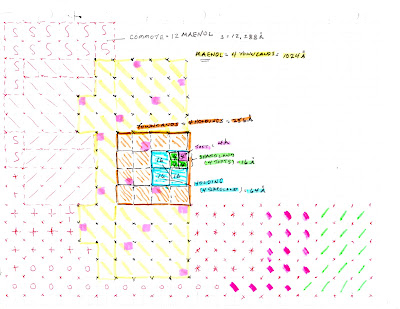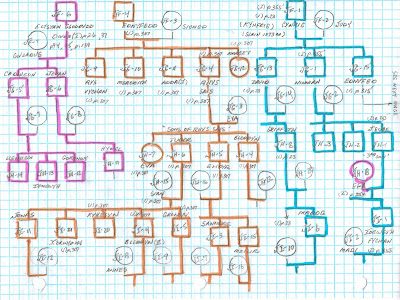Just when you thought things could not get any worse for the ancestors, wrong! After all the changes like, that castle building stuff, new rules and regulations, all kinds of different overlords, claiming all kinds of rights and privileges. Trying to adjust to a new home, then having to ride along different paths, leading to new trading pathways that might still offer some hope for the future, were many of the families' activities. Then the little critter shown below, brought death to most all around.
Can you believe it? The flea it is. This fella rode the back of a much larger critter called the rat. That dirty rat! The most responsible was named
Rattus rattus. This rat was recognized by the fact that its tail was longer than its body and, the color was mostly black. This fella road the ships that came from various ports of trade to the shores of our little island. Here is its picture.
The "black death" this event was called. Not because the rat was black but, it was named after the change of appearance that the folks took after they were infected.
Taking 2 to 15 days after the bite of the flea, loss of appetite (anorexia) and bone pain were the first signs. Next came very high fever (pyrexia), headache, severe fatigue (lassitude), dizziness (vertigo) and rarely shaking chills (rigor). The face would have an expression of horror. The fever could get as high as 103-107 degree Fahrenheit. All over the body large bleeding (hemorrhages) and just under the skin bruising (ecchymoses) would occur. Pustules, abscesses and lymph node swellings called "Buboes" all appeared, thus giving the name Bubonic plague. These swellings were usually in the groin or under the arm pit (axilla). Skin would become dry and feel burning. The tongue would turn black, dry, and form ridges called furrows and, sores on the lips, gums, and nostrils would form. Low, muttering delirium would occur. Vomiting was frequent. Death rate (mortality) was around 65 % and if the infection settled in the lungs (Pneumonic plage) it was always fatal.
The bacteria that brought this rapid course was initially called Pasteurella pestis but, came to be named after the fellow who discovered it in 1894, Yersin, Yersinia pestis. A "pestis" it certainly was and, a real valley of death.
The best text that discusses this plague from its historical perspective is by Philip Ziegler in 1991.
Having just experienced our own pandemic with COVID 19, my heart has a new understanding and admiration for all my ancestors who kept that DNA flowing down the branches.
The flea picture is taken from my article "Fleas", American Family Physician, vol. 29, No. 4, April, 1984.
The rat picture from London School of Hygiene and Tropical Medicine, appearing in Manson's Tropical Diseases, p. 337. [One of my favorite tropical medicine texts published 1982, by Bailliere Tindall, London].
The text by Ziegler was first titled "Western Europe Man, Black Death. Epidemics, history I", 1969, in the United Kingdom. It was first published in the U.S. by Alan Sutton, NH, 1991.










.jpg)























